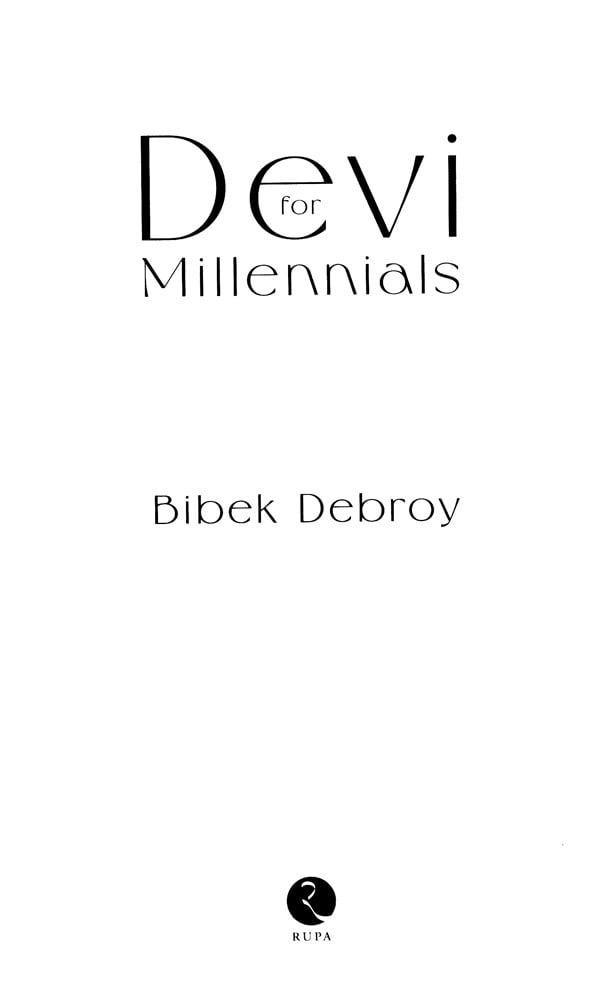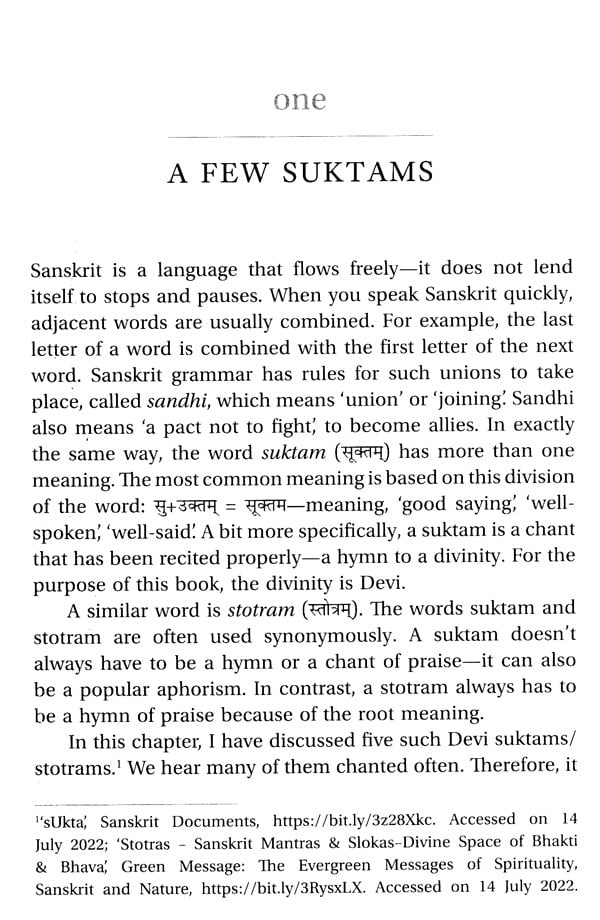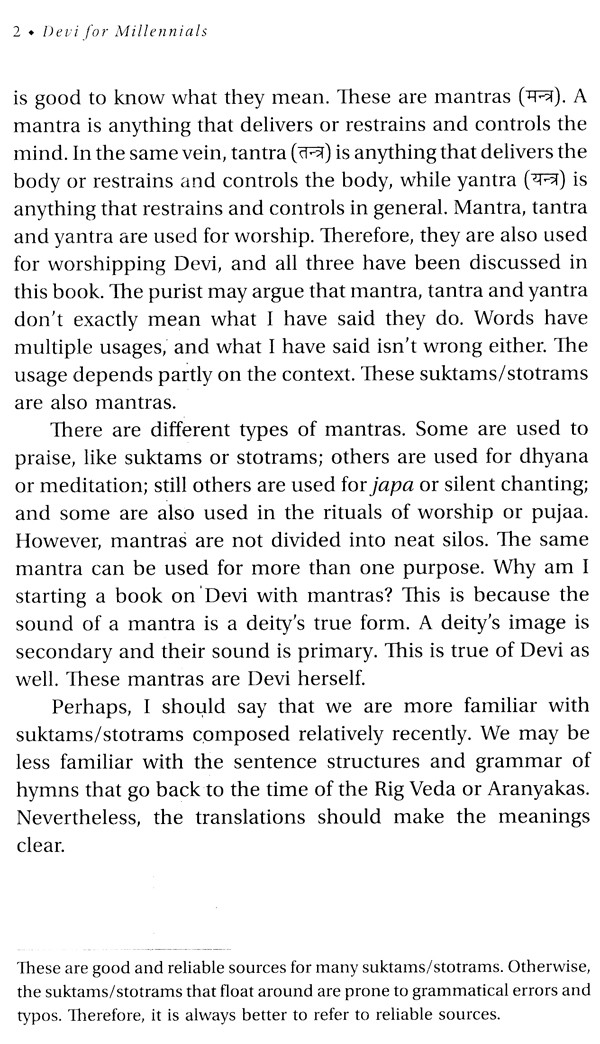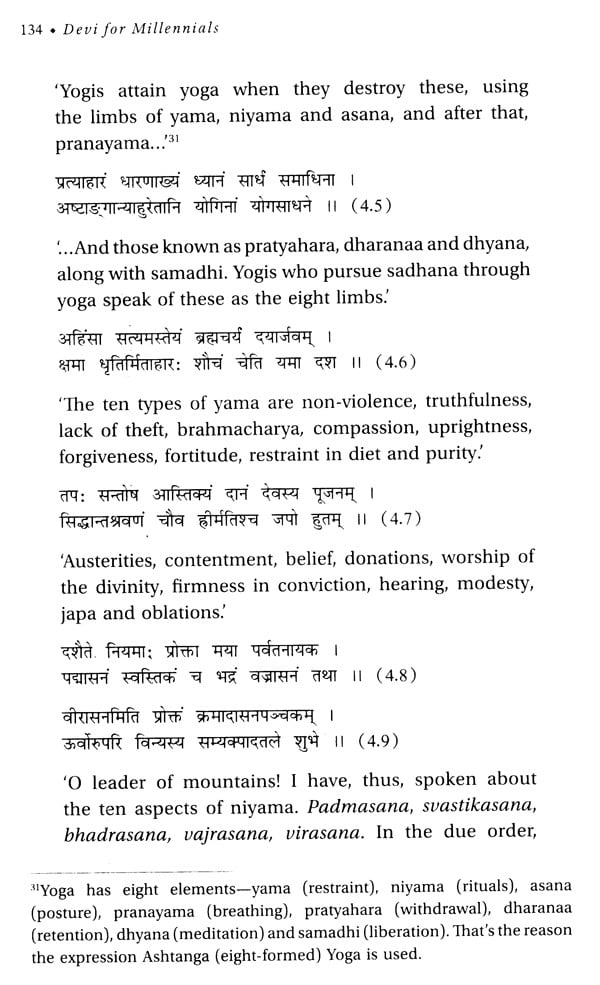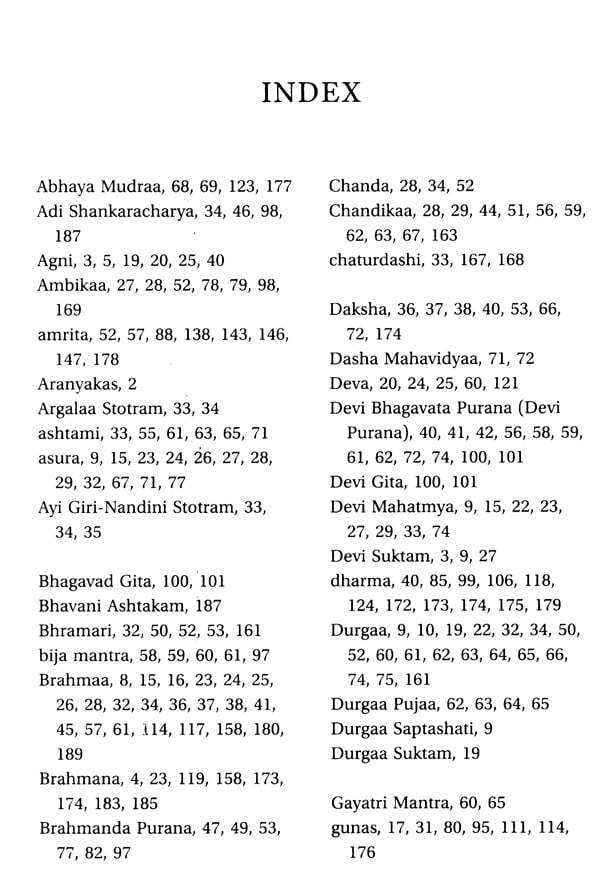
Devi For Millennials
Book Specification
| Item Code: | UAX813 |
| Author: | Bibek Debroy |
| Publisher: | Rupa Publication Pvt. Ltd. |
| Language: | Sanskrit and English |
| Edition: | 2022 |
| ISBN: | 9789355207852 |
| Pages: | 200 |
| Cover: | HARDCOVER |
| Other Details | 9.00 X 6.00 inch |
| Weight | 300 gm |
Book Description
The roots of Devi worship are deeply embedded in Indian society:
Archaeological excavations, going back a few thousand years, show traces of Devi worship. Devi's stories feature in the Puranas and Devi Gita (part of Devi Bhagavata Purana), which is a beautiful amalgamation of Vedanta and tantra.
Directed at young readers, Devi for Millennial demystifies Devi's mantras, tantra, yantras and worship, often perceived to be esoteric. It narrates the stories of Devi and describes in a simple manner the Shakti Peethas and their significance. It also includes translations of verses both familiar and obscure across a wide spectrum of texts, one of them being Devi Gita.
Remaining close and faithful to original Sanskrit texts and without any distortion or interpretation, it is a primer, an introduction to worshipping Devi, who is always with us.
Eventually, my grandparents died. Life moved on. My parents were professed atheists. Nevertheless, we used to observe an annual ritual, driven by my father's enthusiasm. As with generations of Bengalis from that era, on the day of Mahalaya, which signifies the onset of Durgaa Pujaa, my father would wake us up in the morning to listen to the remarkable voice of Birendra Krishna Bhadra reciting 'Mahisasura Mardini' (these were songs in addition to the stotram) on the radio. Depending on where we were geographically based, there was the subsequent annual ritual of either visiting the local pandal for Durgaa Pujaa or pandal hopping across the city.
**Contents and Sample Pages**
